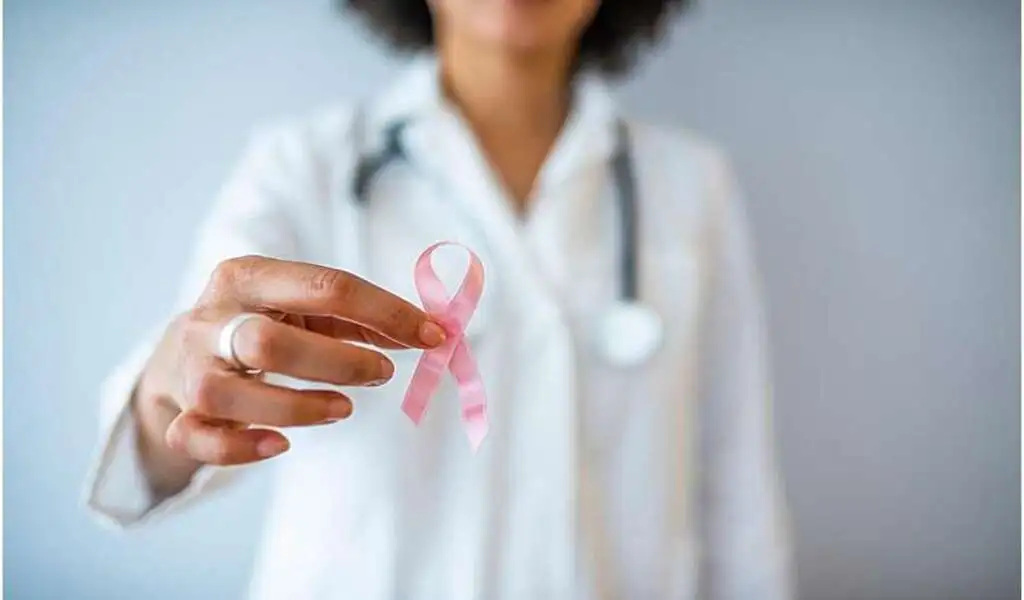Health
Following Your Gut: Smart Choices for Digestive Health

Public awareness of the importance of dietary fibre intake and digestive health has been growing steadily in recent years, especially considering the ongoing COVID-19 crisis. Given the challenges faced by the pandemic, topics such as immunity and staying healthy have all been brought even further to the front of consumers’ minds.
Although a vast majority of the world’s population is still not meeting their daily fibre requirement [1], many consumers are already proactively looking for convenient food and drinks that carry this ingredient. According to recent research, the global dietary fibre market is set to flourish over the coming years — being worth $9.6 billion by 2025 — with Asia Pacific expected to witness the highest growth rate [2].
It is therefore important for food manufacturers to find out more about the benefits of different dietary fibres, and how each can contribute to one’s overall wellbeing so as to better cater to growing health consciousness.
Closing the fibre gap
With rapid modernisation and urbanisation across Asia, lifestyle choices are increasingly being driven by convenience. Higher affluence brings about more food choices for consumers, but the need for fast and hassle-free options mean that they rarely discern between these options. A lifestyle driven by convenience has also led many consumers to increase their consumption of processed food as they choose easy-to-prepare meals and on-the-go food — which are typically low in fibre — over freshly prepared meals, whole grains, fruits, and vegetables that contribute to a well-balanced diet. Consequently, these issues help to explain the rise in digestive health issues and are the most common reasons why many people are not getting the necessary amounts of dietary fibre.
However, this does not mean that processed food or any other pre-prepared food has to be unhealthy. With the right choice of ingredients, a healthy digestive system can be achieved while maintaining one’s diet with a busy lifestyle. A case in point are dietary fibres.
Fundamentally, digestive health is closely linked with dietary fibre. The World Health Organization recommends a daily intake of approximately 25 grams of dietary fibre, or at least 400 grams of fruits and vegetables to ensure adequate daily intake of dietary fibre [3].
In addition, many studies have shown the benefits of a diet with sufficient fibre intake, including supporting bowel movement and general well-being, contributing to weight management [4], as well as better blood sugar management [5]. Further health benefits can also be observed in the lowering of blood cholesterol [6] and the reduction of the risk of coronary heart diseases [7].
Promoting beneficial gut microbiota
Immunity and digestive health are also closely linked, with 70% of our inner defence system situated in the small and large intestine. It is no surprise that good health and inner protection starts with promoting beneficial gut microbiota, which can be nourished by prebiotic fibres.
Even though all dietary fibres are non-digestible, they differ in the way they function in the large intestine. They are either excreted or fermented to short-chain fatty acids by the large intestine’s microbiota. When the fermentation of fibres allows a selective increase of healthy microbiota, they are classified as prebiotic fibres.
Research has demonstrated that short-chain fatty acids, achieved through this prebiotic fermentation, can reach the brain and other organs directly through the blood, or indirectly via the stimulation of immune cells, the hormonal or nervous system and the release of messenger substances [8]. As a result, the gut microbiota can influence digestive health, overall health, and an individual’s inner well-being.
Only very few dietary fibres are scientifically and clinically proven to have this capability. Chicory root fibre (inulin, oligofructose) belong to this exclusive group of prebiotic fibres. Furthermore, they are the only plant-based proven prebiotics.
The importance of prebiotic fibres
Prebiotics are non-digestible fibres that impacts the composition and/or activity of the gut microbiota, resulting in tangible health benefits to the gut. In other words, prebiotics act as the fertiliser for the good bacteria already present in the gut — helping to contribute to a healthy gut environment as well as good digestive health.
BENEO’s chicory root fibres, inulin and oligofructose, can be easily used in most food and drink applications, thus increasing the health benefits of these foods. Obtained from chicory root via a gentle hot water extraction method, inulin and oligofructose are classified as ingredients from natural origin and can be labelled as fibre from a natural source. This is especially crucial to consumers today, who actively look for natural products when making food purchase decisions.
Additionally, there are also technical benefits to be reaped from the addition of these prebiotic fibres. Oligofructose has a mild and pleasant taste, and its fat-mimicking properties can also be used to replace part of the fat content in foods, thus creating healthier indulgent food without any major changes in its texture and taste.
Consumers have already begun to make the link between gut health, and overall health and well-being. They are more motivated to improve their digestive health to improve specific health issues — such as improving their natural defences and therefore their long-term health.
There is clearly an appetite for products that promote good digestive health among consumers, and now functional ingredients manufacturers such as BENEO are creating very real ways for food and drink producers to make the most of this trend. With so many consumers looking at ways to promote their digestive health, the market is wide open for new product development without compromising on taste and texture.
References:
- World Health Organization (2020) Healthy diet, https://www.who.int/news-room/fact-sheets/detail/healthy-diet ↑
- Markets and Markets (2020) Dietary Fibers Market worth $9.6 billion by 2025 https://www.marketsandmarkets.com/PressReleases/dietary-fibers.asp ↑
- World Health Organisation (2015) Healthy Diet Fact Sheet, http://www.who.int/mediacentre/factsheets/fs394/en/ ↑
- TM Barber (2020) The Health Benefits of Dietary Fibre https://www.mdpi.com/2072-6643/12/10/3209/pdf ↑
- JM Lattimer (2010) Effects of Dietary Fiber and Its Components on Metabolic Health https://www.ncbi.nlm.nih.gov/pmc/articles/PMC3257631/ ↑
- Brown L, Rosner B, Willett WW, Sacks FM (1999) Cholesterol-lowering effects of dietary fiber: a meta-analysis, https://pubmed.ncbi.nlm.nih.gov/9925120/ ↑
- DE Threapleton (2013) Dietary fibre intake and risk of cardiovascular disease: systematic review and meta-analysis https://www.bmj.com/content/347/bmj.f6879 ↑
- Amy M. Brownawell, Wim Caers, Glenn R. Gibson, Cyril W. C. Kendall, Kara D. Lewis, Yehuda Ringel, Joanne L. Slavin, Prebiotics and the Health Benefits of Fiber: Current Regulatory Status, Future Research, and Goals https://academic.oup.com/jn/article/142/5/962/4630853 ↑

Health
Report Causes Pfizer Stock to Climb Approximately $1 Billion Acquired by Starboard

(VOR News) – According to a rumor that activist investor Pfizer Starboard Value has taken a holding in the struggling pharmaceutical business that is expected to be worth around one billion dollars, the stock of Pfizer (PFE) is on the increase in premarket trading on Monday.
This comes after the report was made public. The report was made available to the general public following this. Starboard Value was successful in moving forward with the acquisition of the position.
Starboard is said to have approached Ian Read, a former chief executive officer of Pfizer, and Frank D’Amelio, a former chief financial officer, in order to seek assistance with its goals of boosting the performance of the company, according to the Wall Street Journal. Read and D’Amelio are both former Pfizer executives.
The purpose of this is to facilitate the accomplishment of its objectives, which include enhancing the overall performance of the firm.
In their previous jobs, D’Amelio and Read were chief financial officers.
It is stated in the report that the hedge fund is of the opinion that Pfizer, which is currently being managed by Albert Bourla, who succeeded Read as Chief Executive Officer (CEO) in 2019, does not demonstrate the same level of mergers and acquisitions (M&A) discipline that Read did. Bourla took over for Read in 2019. Read was succeeded by Bourla in the year 2019.
Pfizer, a multinational pharmaceutical conglomerate, has made substantial investments in the acquisition of more companies that are involved in the research and development of cancer medicines.
These businesses have been acquired for billions of dollars. The biotechnology company Seagen, which was acquired by Pfizer in the previous year for a price of $43 billion, is included in this category. One of the businesses that can be classified as belonging to this category is Seagen.
In spite of the fact that the S&P 500 Index experienced a 21% increase in 2024.
No major trading occurred in Pfizer stock that year.
Due to the fact that the demand for Pfizer’s COVID-19 vaccines fell after the firm reached its pandemic peak in 2021, the share price of the corporation has decreased by over fifty percent since that time.
This drop has occurred ever since the company’s shares reached their maximum peak, which was during the time that this decline occurred. Not only have they not changed at all, but they have also remained essentially stable. This is in contrast to the S&P 500, which has gained 21% since the beginning of this year.
Recently, the corporation was forced to take a hit when it decided to recall all of the sickle cell illness medications that it had distributed all over the world.
Fears that the prescription could lead patients to experience severe agony and possibly even death were the impetus for the decision to recall the product. In spite of the fact that Pfizer’s stock is increasing by almost three percent as a result of the news that followed the company’s decision, this is the circumstance that has come about.
SOURCE: IPN
SEE ALSO:
New Study Reveals Drinking Soda Pop Increases the Risk of Stroke
The Mpox Vaccine’s Protection Decreases Within a Year; Booster Requirements
Health
New Study Reveals Drinking Soda Pop Increases the Risk of Stroke

A recent report from global research indicates that excessive consumption of coffee or soda pop is associated with an increased risk of stroke, although the intake of black and green tea is correlated with a reduced risk. Excessive consumption of soda pop or coffee warrants caution!
Recent research indicates that it may substantially elevate the risk of stroke.
Consuming four cups of coffee daily elevates the risk of stroke, according to studies, although ingesting 3-4 cups of black or green tea daily typically offers protection against stroke. Additionally, consume more coffee; it may reduce your risk of mortality.
Recent findings from global research studies co-led by the University of Galway and McMaster University, alongside an international consortium of stroke researchers, indicate that soda, encompassing both sugar-sweetened and artificially sweetened variants such as diet or zero sugar, is associated with a 22 percent heightened risk of stroke. The risk escalated significantly with the consumption of two or more of these beverages daily.
Stroke Risk Fizzy Drinks and Soda Pop
The correlation between fizzy drinks consumption and stroke risk was most pronounced in Europe, the Middle East, Africa, and South America. Women exhibit the most elevated risk of stroke from bleeding (intracranial hemorrhage) associated with fruit juice beverages. Consuming over 7 cups of water daily diminishes the likelihood of stroke due to a clot.
Researchers observed that numerous items advertised as fruit juice are derived from concentrates and have added sugars and preservatives, potentially negating the advantages often associated with fresh fruit and instead elevating stroke risk.
Fruit juice beverages were associated with a 37 percent heightened risk of stroke resulting from bleeding (intracranial hemorrhage). Consuming two of these beverages daily increases the risk thrice.
Consuming over four cups of coffee daily elevates the risk of stroke by 37 percent, although lower consumption levels do not correlate with stroke risk. Conversely, tea consumption was associated with an 18-20 percent reduction in stroke risk. Additionally, consuming 3-4 cups daily of black tea, such as Breakfast and Earl Grey varieties, excluding green and herbal teas, was associated with a 29 percent reduced risk of stroke.
Consuming 3-4 cups of green tea daily was associated with a 27 percent reduction in stroke risk. Notably, the addition of milk may diminish or inhibit the advantageous effects of antioxidants present in tea. The lower risk of stroke associated with tea consumption was negated for individuals who added milk.
Disclaimer: This article is intended solely for informational reasons and should not be considered a replacement for professional medical counsel. Consistently consult your physician regarding any inquiries pertaining to a medical problem.
Related News:
Starbucks Faces Sales Decline Amid Price Fatigue and Rising Competition
Starbucks Faces Sales Decline Amid Price Fatigue and Rising Competition
Health
Following a Diagnosis of Breast Cancer, What Else Should You Know?

(VOR News) – Even though breast cancer affects one in eight American women, receiving a diagnosis can make a woman feel isolated.
Experts in breast cancer from the American College of Physicians (ACS) advise patients on how to manage their disease so that they may better cope with this awful information.
First, the kind and stage of breast cancer dictates the course of your care.
In addition to immunotherapy and chemotherapy, there are various surgical options available for the treatment of breast cancer.
Women of African descent are disproportionately affected by triple-negative breast cancer, an extremely aggressive form of the disease that has never proven easy to treat.
According to the American Cancer Society, pembrolizumab (Keytruda), an immunotherapy, has been shown to be helpful when combined with chemotherapy and is currently the recommended course of treatment for certain combinations of triple-negative breast cancer.
In her presentation, Dr. Katharine Yao said, “It’s really important that the patient and physician discuss the patient’s preferences and values when deciding what type of treatment to pursue and that they have an honest, individualized discussion with their care team.”
She is currently responsible for developing breast cancer treatment recommendations for more than 575 hospitals and institutions nationwide in her role as chair of the American College of Surgeons’ National Accreditation Program for Breast Institutions (NAPBC).
Yao, vice chair of research at Endeavor Health NorthShore Hospitals in New York, pointed out that each decision made about a patient’s treatment plan should take her preferences and diagnosis into consideration.
She ought to think about whether she would prefer a mastectomy—a surgical procedure that involves removing the entire breast with or without reconstruction—or a lumpectomy, which involves a surgical procedure that spares part of the breast tissue.
She stated that “the breast cancer you have may be very different from the breast cancer you hear about in your neighbor, colleague, or friend” in a press release issued by the American Cancer Society (ACS).
“Consider that while discussing breast cancer with others.”
Throughout your journey, it is critical that you look after your emotional health because having breast cancer may have a detrimental impact on your mental health.
“Getting a cancer diagnosis does not mean that everything in your life stops to be normal.” Director of the Fellowship in the Diseases of the Breast program at the Winthrop P. Rockefeller Cancer Institute at the University of Arkansas and state head of the American Cancer Society Commission on Cancer for Arkansas, Dr. Daniela Ochoa She thinks adding the burden of a cancer diagnosis and treatment to all the other pressures in life may be taxing.
“Managing stress and emotional health is vital component of a treatment plan.”
Ochoa recommends clinically trained psychologists and social workers who have assisted people in coping with cancer to anyone receiving treatment. Learning coping techniques might also be facilitated by joining cancer support groups or cancer wellness initiatives.
Breast cancer specialists say your care team is crucial.
The American Cancer Society (ACS) defines comprehensive care as having support at every stage of the procedure from surgeons, oncologists, patient navigators, nurses, social workers, psychologists, and other specialists.
After receiving a breast cancer diagnosis, women should see a surgeon or medical oncologist to explore their options; nevertheless, treatment shouldn’t be discontinued after just one appointment or after surgery is over.
Additionally, you can ask trustworthy friends or family members to accompany you to appointments and aid you with research or notes. They could serve as a network of support for you.
Yao stated in his talk that “one of the most important things is that patients should search out a team they have confidence in, that they trust will have their back when they need it, and a team they feel they can get access to and that will help them when they are in need.”
SOURCE: MP
SEE ALSO:
The Mpox Vaccine’s Protection Decreases Within a Year; Booster Requirements
COVID was a Paradigm Shift in Health Policymaking, Says Commissioner Stella Kyriakides.
Rwanda Reports 8 Deaths Linked To Ebola-Like Marburg Virus Days After It Declared An Outbreak
-

 News3 years ago
News3 years agoLet’s Know About Ultra High Net Worth Individual
-
Entertainment2 years ago
Mabelle Prior: The Voice of Hope, Resilience, and Diversity Inspiring Generations
-

 Health4 years ago
Health4 years agoHow Much Ivermectin Should You Take?
-

 Tech2 years ago
Tech2 years agoTop Forex Brokers of 2023: Reviews and Analysis for Successful Trading
-

 Lifestyles3 years ago
Lifestyles3 years agoAries Soulmate Signs
-

 Movies2 years ago
Movies2 years agoWhat Should I Do If Disney Plus Keeps Logging Me Out of TV?
-

 Health3 years ago
Health3 years agoCan I Buy Ivermectin Without A Prescription in the USA?
-

 Learning3 years ago
Learning3 years agoVirtual Numbers: What Are They For?